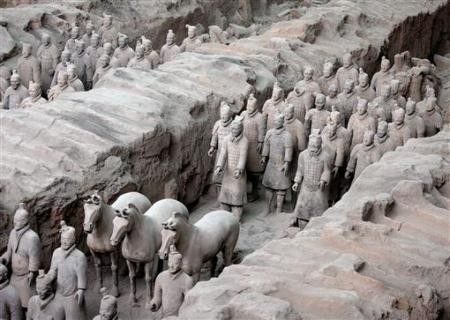Royal Palace of Chinese Terracotta Army's King Unearthed

The remains of an imperial palace believed to be that of King Qin Shi Huang (221 BC - 210 BC), the first emperor of China, have been unearthed.
The ruins were found near his famous mausoleum which is surrounded by a terracotta army guarding their ruler's tomb.
The mausoleum of the Qin dynasty's Qin Shi Huang features a unique funerary artwork which depicts the king lying buried in his tomb surrounded by his army, which is represented by life-size terracotta statues designed to protect their emperor in his afterlife.
And now archaeologists at the Shaanxi Provincial Institute of Archaeology have found the king's palace as well. The excavation site is on the outskirts of Xi'an province, China's news agency Xinhua reports.
According to archaeologists, the palace supposedly had courtyard-style architecture with 18 houses ringing a main building. The complex was about 690m long, 250m wide and spread across an area of 170,000 cubic metres.
"It is the largest complex ever found at the cemetery of Qin Shi Huang, known as China's first emperor as he united the country," Sun Weigang, an associate researcher, said.
According to UNESCO, the terracotta army of the Qin Shi Huang Mausoleum must have represented the exact number of the imperial guards. The official website of the mausoleum states that about 6,000 statues of warriors and horses are still buried at the site. A recent excavation, in June, revealed a further 110 more terracotta statues.
The Museum of Qin Terracotta Warriors and Horses, a tourist hotspot in China, is built over the site of the excavation itself and was inscribed into UNESCO'S World Heritage List in 1987. Tourism experts believe the newly excavated ruins of the imperial palace will add to its popularity.
© Copyright IBTimes 2025. All rights reserved.






















